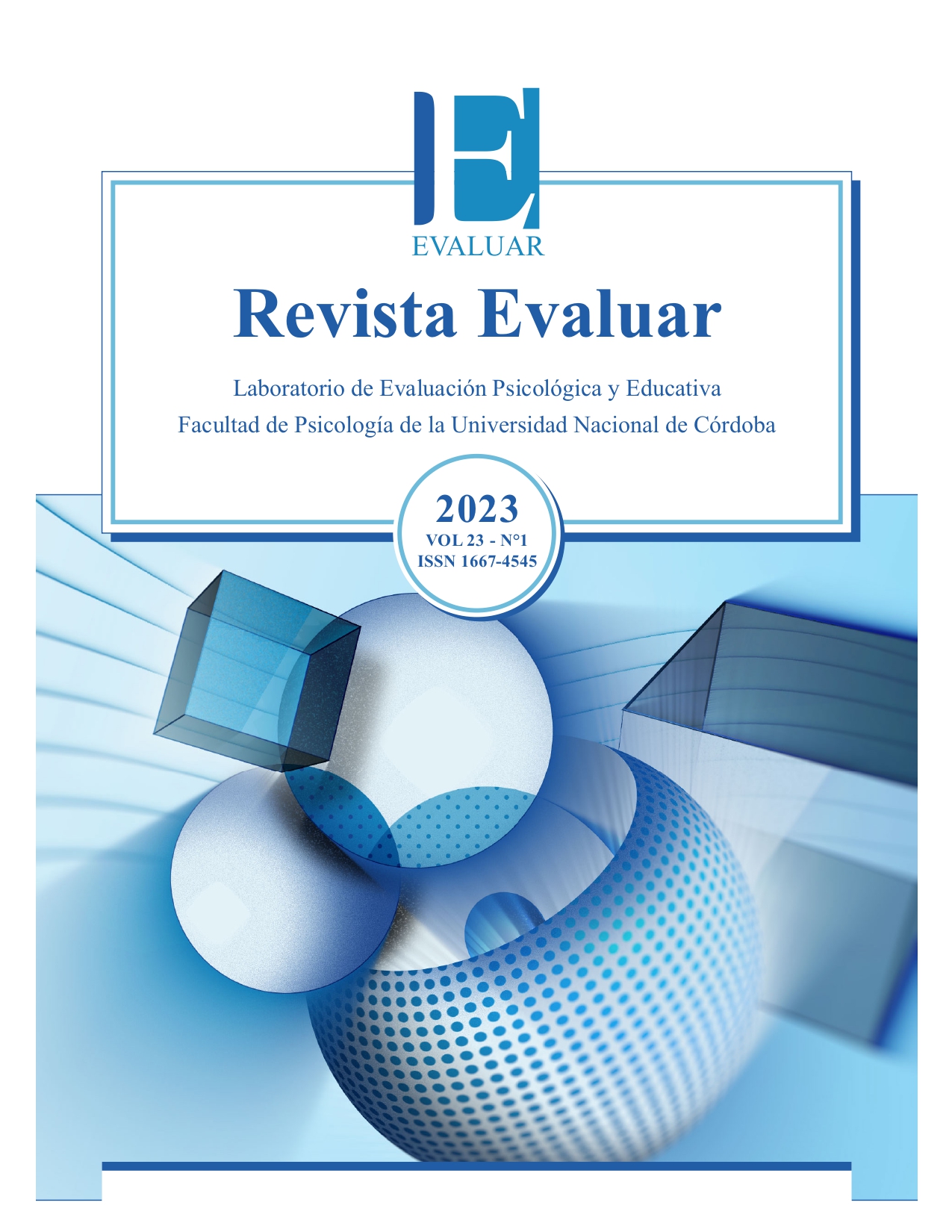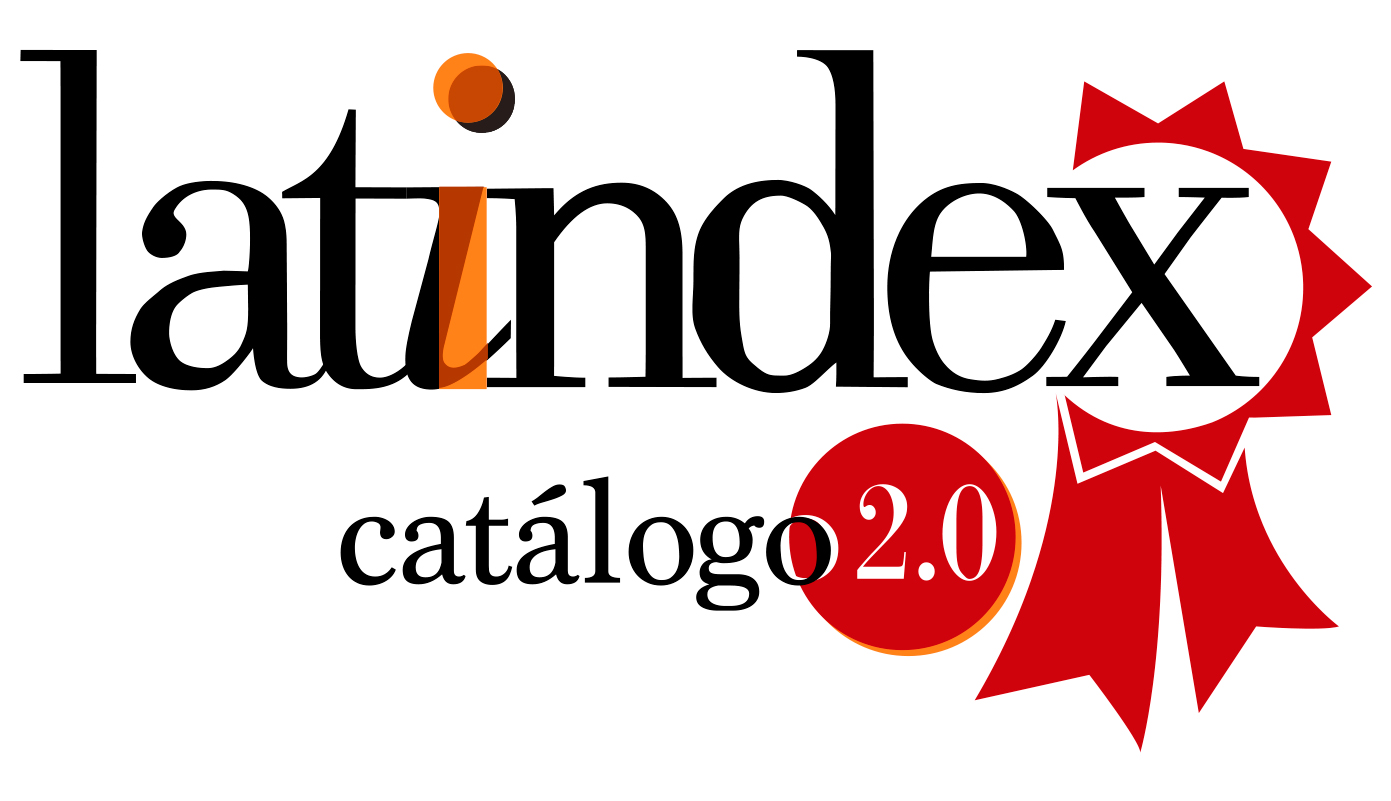Longitudinal Invariance of IPAE in Spanish first-grade students
DOI:
https://doi.org/10.35670/1667-4545.v23.n1.41003Keywords:
transcription skills, elementary grades, writing, longitudinal measurement invariance, curriculum-based measurementAbstract
A study was conducted to analyze the factorial structure and longitudinal invariance of the Indicators of Basic Early Writing Skills (IPAE) as Curriculum-Based Measurement (CBM) in Spanish 1st grade students. The proposed model is a one-factor model in which the five IPAE tasks (i.e. allograph selection, dictation of words with arbitrary spelling, dictation of words with regulated spelling, dictation of pseudowords, and dictation of sentences) serve as observable indicators for a single underlying factor (i.e., transcription). The IPAE is composed of three parallel forms (i.e., A, B, and C), and it was administered at three different times to 231 Spanish first-grade students during the school year (beginning, middle, and end). It is concluded that the IPAE presents an adequate construct validity and measurement equivalence that allows the evaluation of first-grade transcription ability over time.
Downloads
References
Abbott, R. D., Berninger, V. W., & Fayol, M. (2010). Longitudinal relationships of levels of language in writing and between writing and reading in Grades 1 to 7. Journal of Educational Psychology, 102(2), 281-298. https://doi.org/10.1037/a0019318
Arfé, B., Dockrell, J. E., & De Bernardi, B. (2016). The effect of language specific factors on early written composition: The role of spelling, oral language and text generation skills in a shallow orthography. Reading and Writing: An Interdisciplinary Journal, 29(3), 501-527. https://doi.org/10.1007/s11145-015-9617-5
Babayiğit, S., & Stainthorp, R. (2010). Component processes of early reading, spelling and narrative writing skills in Turkish: A longitudinal study. Reading and Writing: An Interdisciplinary Journal, 23(5), 539-568. https://doi.org/10.1007/s11145-009-9173-y
Berninger, V. W. (1994). Intraindividual differences in levels of language in comprehension of written sentences. Learning and Individual Differences, 6(4), 433-457. https://doi.org/10.1016/1041-6080(94)90004-3
Berninger, V., Abbott, R., Augsburger, A., & García, N. (2009). Comparison of pen and keyboard transcription modes in children with and without learning disabilities. Learning Disability Quarterly, 32(3), 123-141. https://doi.org/10.2307/27740364
Berninger, V. W., Abbott, R. D., Jones, J., Wolf, B. J., Gould, L., Anderson-Youngstrom, M., Shimada, S., & Apel, K. (2006). Early development of language by hand: Composing, reading, listening, and speaking connections; three letter-writing modes; and fast mapping in spelling. Developmental Neuropsychology, 29(1), 61-92. https://doi.org/10.1207/s15326942dn2901_5
Berninger, V. W., Abbott, R. D., Whitaker, D., Sylvester, L., & Nolen, S. B. (1995). Integrating low- and high-level skills in instructional protocols for writing disabilities. Learning Disability Quarterly, 18(4), 293-309. https://doi.org/10.2307/1511235
Berninger, V. W., & Swanson, H. L. (1994). Modifying Hayes and Flower’s model of skilled writing to explain beginning and developing writing. En E. C. Butterfield, & J. Carlson (Eds.), Advances in Cognition and Educational Practice (Vol. 2, pp. 57-81). JAI Press.
Berninger, V., & Winn, W. D. (2006). Implications of advancements in brain research and technology for writing development, writing instruction, and educational evolution. En C. MacArthur, S. Graham, & J. Fitzgerald (Eds.), Handbook of writing research (pp. 96-114). The Guilford Press.
Berninger, V., Vaughan, K., Abbott, R., Begay, K., Coleman, K., Curtin, G., Hawkins, J., & Graham, S. (2002). Teaching spelling and composition alone and together: Implications for the simple view of writing. Journal of Educational Psychology, 94(2), 291-304. http://doi.org/10.1037/0022-0663.94.2.291
Berninger, V., Yates, C., Cartwright, A., Rutberg, J., Remy, E., & Abbott, R. (1992). Lower-level developmental skills in beginning writing. Reading and Writing: An Interdisciplinary Journal, 4, 257-280.
Chen, F. F. (2007). Sensitivity of goodness of fit indexes to lack of measurement invariance. Structural Equation Modeling: A Multidisciplinary Journal, 14(3), 464-504. https://doi.org//10.1080/10705510701301834
Cheung, G. W., & Rensvold, R. B. (2002). Evaluating goodness-of-fit indexes for testing measurement invariance. Structural Equation Modeling: A Multidisciplinary Journal 9(2), 233-255. https://doi.org/10.1207/S15328007SEM0902_5
Cohen, P., Cohen, J., Aiken, L., & West, S. G. (1999). The problem of units and the circumstance for POMP. Multivariate Behavioral Research, 34(3), 315-346. https://doi.org/10.1207/S15327906MBR3403_2
Dombek, J. L., & Al Otaiba, S. (2016). Curriculumbased measurement for beginning writers (K-2). Intervention in School and Clinic, 51(5), 276-283. https://doi.org/10.1177/105345121560669
Foegen, A., Jiban, C., & Deno, S. (2007). Progress monitoring measures in mathematics: A review of the literature. The Journal of Special Education, 41(2), 121-139. https://doi.org/10.1177/00224669070410020101
Gil, V., de León, S. C., & Jiménez, J. E. (2021). Universal screening for writing risk in Spanish-speaking firstgraders. Reading & Writing Quarterly, 37(2), 117-135. https://doi.org/10.1080/10573569.2020.1733451
Graham, S., Berninger, V. W., Abbott, R. D., Abbott, S. P., & Whitaker, D. (1997). Role of mechanics in composing of elementary school students: A new methodological approach. Journal of Educational Psychology, 89(1), 170-182. https://doi.org/10.1037/0022-0663.89.1.170
Graham, S., & Perin, D. (2007). A meta-analysis of writing instruction for adolescent students. Journal of Educational Psychology, 99(3), 445-476. https://doi.org/10.1037/0022-0663.99.3.445
Guzmán, R., & Jiménez, J. E. (2001). Estudio normativo sobre parámetros psicolingüísticos en niños de 6 a 8 años: La familiaridad subjetiva. Cognitiva, 13(2), 153-191. https://dialnet.unirioja.es/servlet/revista?codigo=295
Jiménez, J. E. (2017). Early Grade Writing Assessment (EGWA): An instrument model. Journal of Learning Disabilities, 50(5), 491-503. https://doi.org/10.1177/0022219416633127
Jiménez, J. E. (2018). Early Grade Writing Assessment (EGWA): A report on development of an instrument. United Nations Educational, Scientific and Cultural Organization. https://unesdoc.unesco.org/inicio
Jiménez, J. E., & de León, S. C. (2017). Análisis factorial confirmatorio del IPAM en escolares de tercer curso de primaria. Revista Evaluar, 17(2), 81-96. https://doi.org/10.35670/1667-4545.v17.n2.18723
Jiménez, J. E., & Gil, V. (2019). IPAE: Indicadores de Progreso de Aprendizaje en Escritura [material complementario]. En J. E. Jiménez (Ed.), Modelo de respuesta a la intervención. Un enfoque preventivo para el abordaje de las dificultades de aprendizaje (pp. 1051-1060). Pirámide.
Jiménez, J. E., & Hernández-Cabrera, J. A. (2019). Transcription skills and written composition in Spanish beginning writers: Pen and keyboard modes. Reading and Writing: An Interdisciplinary Journal, 32(7), 1847-1879. https://doi.org/10.1007/s11145-018-9928-4
Juel, C. (1988). Learning to read and write: A longitudinal study of 54 children from first through fourth grades. Journal of Educational Psychology, 80(4), 437-447. https://doi.org/10.1037/0022-0663.80.4.437
Juel, C., Griffith, P., & Gough, P. (1986). Acquisition of literacy: A longitudinal study of children in first and second grade. Journal of Educational Psychology, 78(4), 243-255. https://doi.org/10.1037/0022-0663.78.4.243
Kim, Y-. S., Al Otaiba, S., Puranik, C., Folsom, J. S., Greulich, L., & Wagner, R. K. (2011). Componential skills of beginning writing: An exploratory study. Learning and Individual Differences, 21(5), 517-525. https://doi.org/10.1016/J.LINDIF.2011.06.004
Kline, R. B. (2005). Principles and practice of structural equation modeling (2da ed.). Guilford Press.
Limpo, T., & Alves, R. A. (2013). Modeling writing development: Contribution of transcription and self-regulation to Portuguese students’ text generation quality. Journal of Educational Psychology, 105(2), 401-413. https://doi.org/10.1037/a0031391
Longcamp, M., Zerbato-Poudou, M. T., & Velay, J-. L. (2005). The influence of writing practice on letter recognition in preschool children: A comparison between handwriting and typing. Acta Psychologica, 119(1), 67-79. https://doi.org/10.1016/j.actpsy.2004.10.019
Mäki, H. S., Voeten, M. J. M., Vauras, M. M. S., & Poskiparta, E. H. (2001). Predicting writing skill development with word recognition and preschool readiness skills. Reading and Writing: An Interdisciplinary Journal, 14(7-8), 643-672. https://doi.org/10.1023/A:1012071514719
McMaster, K. L., & Campbell, H. (2008). Technical features of new and existing measures of written expression: An examination within and across grade levels. School Psychology Review, 37, 550-566.
McMaster, K., & Espin, C. (2007). Technical features of curriculum-based measurement in writing: A literature review. The Journal of Special Education, 41(2), 68-84. https://doi.org/10.1177/00224669070410020301
Milfont, T., & Fischer, R. (2010). Testing measurement invariance across groups: Applications in cross-cultural research. International Journal of Psychological Research, 3(1), 111-130. https://doi.org/10.21500/20112084.857
Newsom, J. T. (2015). Longitudinal structural equation modeling: A comprehensive introduction. Routledge/Taylor & Francis Group.
Puranik, C. S., & AlOtaiba, S. (2012). Examining the contribution of handwriting and spelling to written expression in kindergarten children. Reading and Writing, 25(7), 1523-1546. https://doi.org/10.1007/s11145-011-9331-x
R Core Team. (2021). R: A language and environment for statistical computing. R Foundation for Statistical Computing, Vienna, Austria. https://www.R-project.org
Rojas-Torres, L., Rojas-Rojas, G., & Brizuela-Rodríguez, A. (2018). El uso de la invarianza de medición con variables dicotómicas como evidencia de validez. Revista Evaluar, 18(2), 45-58. https://doi.org/10.35670/1667-4545.v18.n2.20807
Rossell, Y. (2012). lavaan: An R package for structural equation modeling. Journal of Statistical Software, 48(2), 1-36. https://doi.org/10.18637/jss.v048.i02
Rutkowski, L., & Svetina, D. (2014). Assessing the hypothesis of measurement invariance in the context of large-scale international surveys. Educational and Psychological Measurement, 74(1), 31-57. https://doi.org/10.1177/0013164413498257
Rutkowski, L., & Svetina, D. (2017). Measurement invariance in international surveys: Categorical indicators and fit measure performance. Applied Measurement in Education, 30(1), 39-51. https://doi.org/10.1080/08957347.2016.1243540
Svetina, D., & Rutkowski, L. (2017). Multidimensional measurement invariance in an international context: Fit measure performance with many groups. Journal of Cross-Cultural Psychology, 48(7), 991-1008. https://doi.org/10.1177/0022022117717028
Wayman, M. M., Wallace, T., Wiley, H. I., Tichá, R., & Espin, C. A. (2007). Literature synthesis on curriculum-based measurement in reading. The Journal of Special Education, 41(2), 85-120. https://doi.org/10.1177/00224669070410020401
Downloads
Published
How to Cite
Issue
Section
License
Copyright (c) 2023 Juan E. Jiménez, Eduardo García

This work is licensed under a Creative Commons Attribution 4.0 International License.
Revista Evaluar aplica la Licencia Internacional de Atribuciones Comunes Creativas (Creative Commons Attribution License, CCAL). Bajo esta licencia, los autores retienen la propiedad de copyright de los artículos pero permiten que, sin que medie permiso de autor o editor, cualquier persona descargue y distribuya los artículos publicados en Evaluar. La única condición es que siempre y en todos los casos se cite a los autores y a la fuente original de publicación (i.e. Evaluar). El envío de artículos a Evaluar y la lectura de los mismos es totalmente gratuito.




_(3).jpg)





